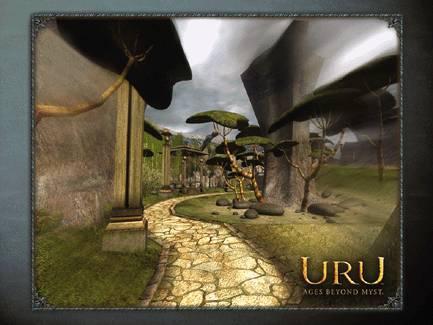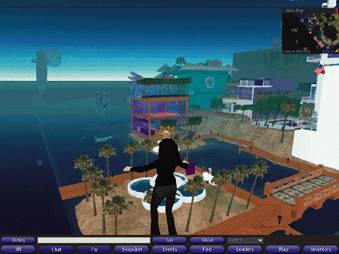Section 2.5. Wayfinding in the Noosphere
2.5. Wayfinding in the NoosphereHave you heard of the hippocampus ? It's one of the most ancient parts of the brain, located deep within the temporal lobes and adjacent to the amygdala. This horseshoe-shaped structure plays a central role in learning, memory, and wayfinding. We know rats rely on the hippocampus for maze navigation. It's essential for both path integration and the processing of cognitive maps. We know neurons called "place cells" are intensely active when a rat revisits familiar locations. And we know animals and humans experience severe disorientation when the hippocampus is damaged. Magnetic resonance imaging (MRI) scans have shown an enlarged posterior region of the hippocampus in taxi drivers, and Positron Emission Tomography (PET) scans show increased hippocampal activity when drivers are asked to recall routes around the city. In recent years, researchers have conducted similar experiments in virtual environments. Sure enough, when subjects are exploring a virtual maze or the artificial terrain of a video game, those same neurons light up. Does this constitute evidence of a biological basis for the validity of wayfinding metaphors on the World Wide Web? Not quite. Virtual mazes and semantic spaces are not equivalent. But it does remind us that when we enter the artificial noosphere, we bring our natural instincts and our physical bodies with us. A Jesuit paleontologist and philosopher by the name of Teilhard de Chardin popularized the notion of the noosphere or "sphere of human thought" back in the early 1900s. Similar to the atmosphere and biosphere, the noosphere is composed of all the interacting minds and ideas on earth. It's a provocative and romantic concept. But is the noosphere real? Or is it just a metaphor, a figure of speech for relating our experience of the physical world to the ethereal realm of knowledge? Well, there's a distinguished linguistics professor at UC Berkeley who would take issue with its dismissal as just a metaphor. George Lakoff has spent many years researching the subtle power of metaphor to interpret and shape our experience. In the book Metaphors We Live By, he and his co-author explain:
Interestingly, Lakoff and Johnson dedicate a chapter to orientational metaphors that are mostly spatial in nature: up-down, in-out, front-back, on-off, deep-shallow, and central-peripheral. These metaphors "arise from the fact that we have bodies of the sort we have and that they function as they do in our physical environment." For each metaphor type, the authors suggest a physical basis. For example:
Spatial and orientational metaphors have deep roots in our physical experience, and yet they're forever sprouting in the unearthly terrain of the noosphere. Readers get lost in a good book. Lawyers review landmark cases. Users navigate web sites. We use language to construct worlds of words that are, in a very real sense, navigable. While today's attention is focused on the semantic cities of cyberspace and the Web, language and wayfinding have walked hand in hand from the beginning. In fact, evidence points to the gestural origins of language around 500,000 years ago. It's likely that our first words were actually vocalized grunts and squeals used to draw attention to manual gestures indicating the direction of food, water, home, or danger. Look! Over there! Watch out! Over time, we developed a sophisticated vocabulary for describing routes, landmarks, and destinations. The Songlines of Australia and the Odyssey of Homer stand testament to the interwoven histories of oral communication and wayfinding. For many millennia, we used words to cooperatively navigate physical spaces, and then, in an interesting metaphorical twist, we began using the concept of space to organize our ideas:
Of course, this mastery of the memory palace was limited to the few. It took the printed word, the proliferation of talking objects called documents, and the invention of libraries for these spatial metaphors to flourish. Suddenly, people found themselves literally surrounded by ideas. Imagine standing in the Library of Alexandria in 150 B.C. The walls are lined with tens of thousands of scrolls containing the best thoughts of the best minds in the world. To find the knowledge you seek, you must rely on bibliographies, subject catalogs, and other finding aids. And you must move through physical space to locate and retrieve information objects. How could you fail to perceive this experience in terms of navigation and wayfinding? Libraries exist at the very intersection of physical and semantic space. They inform and inspire our sense of the noosphere. So, it's no surprise the library made an appearance in Vannevar Bush's classic 1945 essay "As We May Think," which described collaborative hypertext for the first time:
While Bush's theoretical memex is widely considered a harbinger of today's World Wide Web, it was later in the 20th century, 1984 to be exact, when science-fiction author William Gibson lit up the imaginations of people around the world with his dystopic vision of a computer-generated parallel universe:
|
EAN: 2147483647
Pages: 87
 ]
] ]
] 

